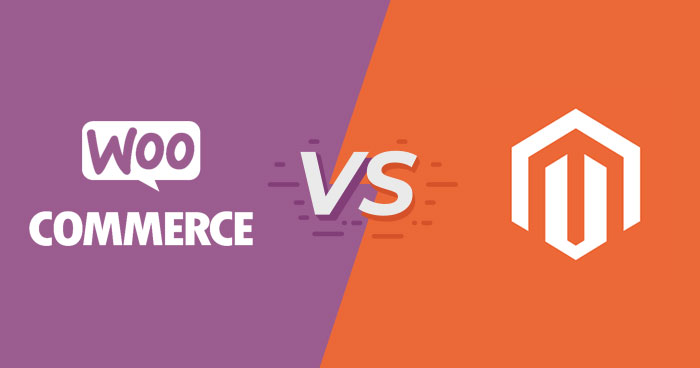WooCommerce vs Magento: Choosing the Right Platform for Your Business
Choosing between WooCommerce and Magento can feel overwhelming. Both platforms dominate the eCommerce space but cater to vastly different audiences. Let’s cut through the noise and compare them head-to-head, focusing on what matters most: costs, scalability, ease of use, and long-term growth.
Quick Comparison: WooCommerce vs Magento (2024)
| Feature | WooCommerce | Magento |
|---|---|---|
| Best For | Small businesses, startups, WordPress users | Large enterprises, B2B brands, complex stores |
| Cost | 120–1,000+/year (hosting, plugins, themes) | 22,000–190,000+/year (Enterprise plans) |
| Ease of Use | Beginner-friendly, intuitive WordPress integration | Steep learning curve, requires technical expertise |
| Scalability | Limited (needs plugins for growth) | Built for enterprise-level scaling |
| Security | Relies on WordPress plugins | Advanced security patches, dedicated scans |
| SEO & Marketing | Integrates with WordPress SEO tools (Yoast, Rank Math) | Built-in SEO tools, A/B testing, advanced analytics |
Ease of Use: Who Wins?
- WooCommerce: Perfect for beginners.
- Installs in minutes via WordPress.
- Drag-and-drop themes, 10,000+ plugins.
- Setup wizard guides you through payments, taxes, and shipping.
- Magento: Built for developers.
- Requires command-line knowledge for installation.
- Complex dashboard with advanced customization options.
Verdict: WooCommerce is ideal if you lack coding skills. Magento demands a developer.
Cost Breakdown: Which Fits Your Budget?
- WooCommerce:
- Free plugin, but costs add up:
- Hosting: $120+/year
- Premium plugins: 100–400/year
- Themes: 20–129
- Example: A basic store costs ~$300/year.
- Free plugin, but costs add up:
- Magento:
- Open Source (free): Limited features.
- Commerce Edition: Starts at $22,000/year.
- Hidden costs:
- Developer fees: 1,800–10,000+
- Security patches: 50–300/year
Verdict: WooCommerce wins for affordability. Magento suits deep-pocketed enterprises.
Features: Who Does More?
- Product Management:
- Both support unlimited products.
- Magento offers multi-store management out-of-the-box (WooCommerce needs plugins).
- B2B Tools:
- Magento Commerce includes bulk pricing, custom catalogs.
- WooCommerce requires paid plugins like B2B for WooCommerce.
- Promotions:
- Magento: Built-in tiered discounts, cart rules.
- WooCommerce: Relies on plugins (e.g., Dynamic Pricing).
Verdict: Magento leads in advanced features; WooCommerce requires plugins.
Scalability: Handling Growth
- WooCommerce:
- Struggles with 50,000+ products without heavy optimization.
- Needs plugins like Jetpack for performance boosts.
- Magento:
- Built to handle 100,000+ products and high traffic.
- Supports global selling with multi-language/currency tools.
Verdict: Magento is future-proof for rapid scaling.
Security: Which Is Safer?
- WooCommerce: Depends on WordPress security.
- Requires plugins like Wordfence for malware scans.
- Magento: Enterprise-grade protection.
- Free Adobe Security Scan detects 21,000+ threats.
- Regular patches for vulnerabilities.
Verdict: Magento offers stronger built-in security.
SEO & Marketing Tools
- WooCommerce:
- Integrates with Yoast SEO, email tools like Omnisend.
- Limited A/B testing capabilities.
- Magento:
- Built-in SEO-friendly URLs, sitemaps, and analytics.
- Advanced segmentation for personalized campaigns.
Verdict: Magento edges ahead with native marketing tools.
Support & Community
- WooCommerce:
- 24/7 forums, WordPress experts, and paid plugin support.
- Magento:
- Enterprise users get dedicated support.
- Open Source users rely on community forums.
Verdict: Tie. Both have strong communities but lack direct support for free tiers.
Final Verdict: Who Should Choose What?
Pick WooCommerce If You…
- Run a small to medium-sized store.
- Use WordPress and want a budget-friendly setup.
- Prefer DIY customization without coding.
Choose Magento If You…
- Need enterprise-level scalability.
- Have a developer team (or budget to hire one).
- Sell B2B or manage complex catalogs.
Still Unsure?
- Startups: WooCommerce’s low cost and simplicity make it the clear choice.
- Growing Brands: Migrate to Magento once you hit $500k+ in annual revenue.
By aligning your choice with business size, technical resources, and growth goals, you’ll unlock the full potential of your eCommerce store.


